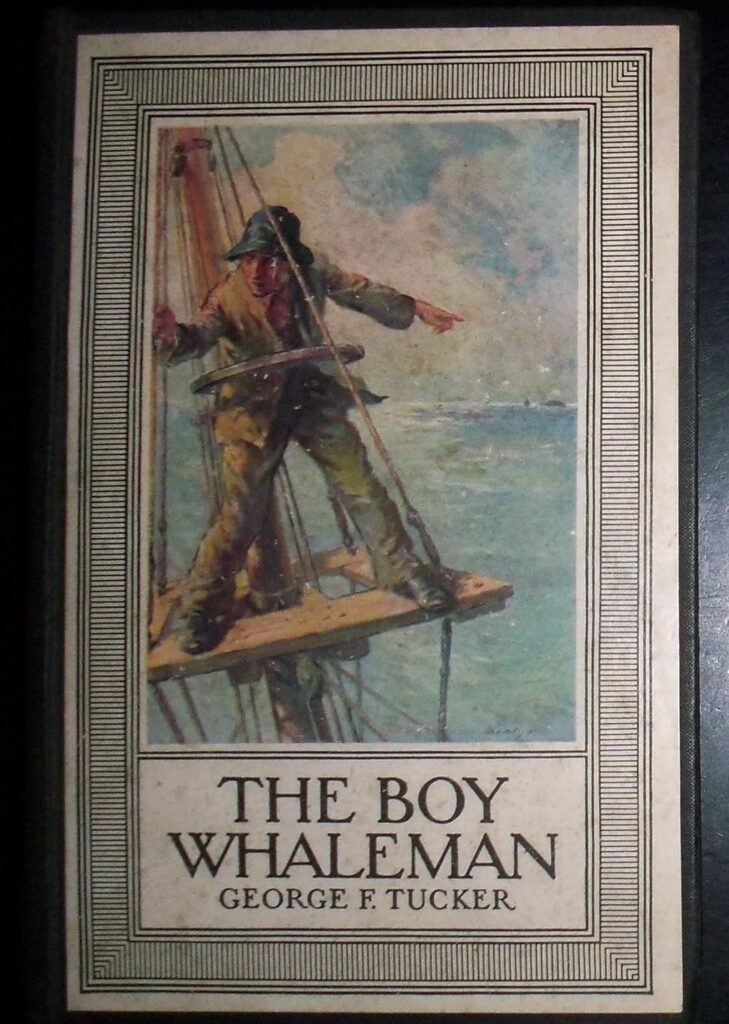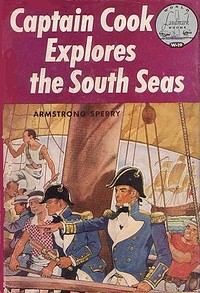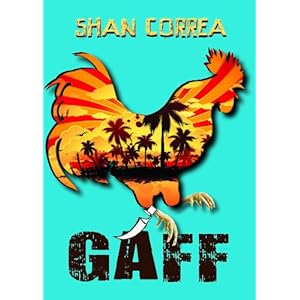In searching for children’s books published 100 years ago in 1924, I found a set of three books called The Three Owls, edited by New York Public Library children’s librarian Anne Carroll Moore. In these three volumes Ms. Moore collected various thoughts, essays, and booklists, written by herself and others, related to the children’s literature of her day. In the first volume of The Three Owls, a children’s author named Henry Beston (later to become husband to children’s author Elizabeth Coatsworth) reviews The Boy Whaleman, saying, “Of all the accounts of whaling voyages I have read for some time, quite the best is this boy’s book by George F. Tucker. It is the record of a youngster’s one cruise in an old-time whaler, which was rather a decent ship as whalers go.”
Mr. Beston and I are in agreement, not that I have read that many accounts of whaling voyages to compare. The book is more of a travelog than a story, although travel is not quite the word for the experience of a sailor who took ship on a whaler. More appropriate terms come to mind: hard work, danger, adventure, or “stink, grease, and backache” as the description of a whaleman’s work went at the time. The book takes place in the early 1860’s as the boy Homer Bleechly, age fifteen, takes ship from New Bedford, Massachusetts on the whaler, Seabird. He will be eighteen and a man by the time he returns to his home in New Bedford.
“My father, when a young man, went whaling for a single voyage which lasted for more than three years. He was a sailor, or, to use the regular phrase, a foremast hand, and at the end of two years, he became a boat-steerer or a harpooner. When I was a little boy he used to take me on his knee and tell me stories about the life of the whalemen, –of chasing whales and harpooning them, of angry whales smashing boats and chewing them to bits; of towing whales to the ship and cutting them in and trying them out; of losing the ship and remaining all might in the open boats; of encountering great storms and riding them out in safety; of meeting after many months another New Bedford vessel, and getting the latest news from home; and of visiting in the Pacific Ocean islands inhabited by savages.”
All these stories from Homer’s father are a foreshadowing of almost exactly what happens to Homer Bleechly on the Seabird, and Homer narrates his voyage with gusto and with much intelligent detail about the life of a whaleman. Some parents may cringe at the gory descriptions of slippery blood and guts covering the ship’s deck, of plunging a harpoon into the whale’s eye, or of scooping the spermaceti out of the whale’s head cavity. But a young person who is hungry for adventure can take these things in stride just as Homer apparently did. There are also mentions of the South Sea islanders as savages and uncivilized and of cannibalism both in the islands and in sailor stories that Homer and the others tell each other, but these things are not dwelt upon.
The work and culture of a whaling ship are the main focus of the book, and the story is somewhat slight in comparison to the details about the sea, the lore of whales, seamanship, financial matters in regard to whaling, and Homer’s shipmates in forecastle. It’s something of a coming of age story, but again the emphasis is not on Homer himself but rather on the Seabird and its job and the events of the voyage.
Reading this book made me want to read more about so many things: Tahiti, whales, Commodore Perry, whaling and seagoing, Captain Cook and his voyages, the Essex, the Bounty mutiny, Pitcairn Island, whale ships, missionaries to Polynesia and Micronesia, Magellan, the opening of Japan to Western influence, ambergris, and much more. I have a whole list of books to read next, but, alas, not enough time to read them all in addition to my many other reading projects.






